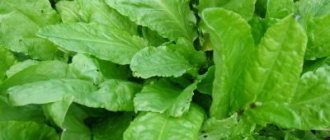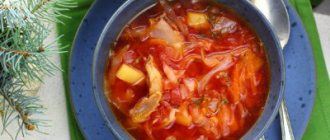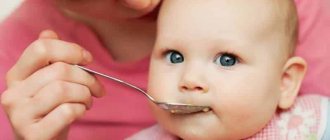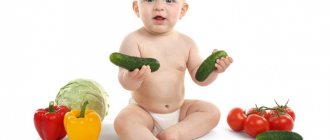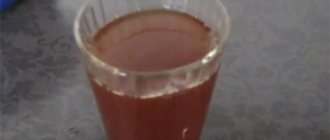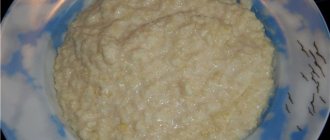Many parents are concerned that their children prefer sausages to real meat. Doctors warn that this product should not appear frequently in a child’s diet, as it negatively affects the functioning of the digestive system and the health of the child’s body as a whole.
Photo: Depositphotos.com. Author: maria.symchych.
The difference between regular and baby sausages
Sausages designed for feeding children differ from regular ones in composition, spice content and calorie content.
Compound
List of main components:
- A mandatory ingredient is meat: beef, pork or poultry.
- Seasonings: black pepper, garlic, cloves, nutmeg, coriander, salt.
- Lard or lard.
- Fillers: soy or wheat protein, starch, various cereals and vegetable fat.
- Egg powder.
- Food additives that give the desired color and consistency to the finished product, as well as increase shelf life: preservatives, flavor enhancers, flavorings and coloring agents, including phosphates and sodium nitrite.
- By-products through which the manufacturer is trying to save money: tendons, blood, adipose tissue, poultry skin and sodium casein.
In accordance with GOSTs, the composition of children's sausages must be completely natural:
- meat and offal;
- animal fat (vegetable fats are not allowed);
- milk or cream;
- eggs;
- The following preservatives are allowed: calcium citrate and antioxidant - ascorbic acid.
At what age is nutmeg allowed for children?
Calorie content
The energy value of children's semi-finished products is lower due to the lower fat content: 201 kcal versus 250–330 kcal per 100 g.
| Mass fraction, % | Adults | Children's |
| Squirrels | 10–12 | ≤12 |
| Fats | 16–30 | ≤22 |
GOST standards
GOST 31498–2012 must be indicated on the packaging. This document regulates the production of boiled sausages, frankfurters and sausages for baby food.
Organoleptic properties and quality indicators for cooked sausages:
- They have a clean, smooth surface without fatty edema.
- May be wrapped in packaging or sold without it.
- The cut has a uniform pink texture. The presence of voids is unacceptable.
- The taste and smell correspond to the specified type of meat product: lightly salted, with the aroma of spices, without foreign flavors.
- The shape is flat or slightly curved, size: 5–11 cm in length, and 1.4–3.2 cm in diameter at the cut.
| Supplements | Mass fraction, no more, % |
| Salt | 1,5–1,8 |
| Sodium nitrite | 0,003 |
| Phosphorus | 0,25 |
It is acceptable to add ascorbic acid, B vitamins and microelements (iron, calcium, iodine) as an antioxidant.
Nutritional supplements
Some food additives approved for adult nutrition are not allowed in children's meat products:
- Acidity regulators (E262, E325, E326, E330, E331) - are used to give a brighter taste and normalize the pH of the product.
- Stabilizers (food phosphates E339, E451, E450, E452) - provide the desired consistency.
- Flavor and aroma enhancer (E621, or monosodium glutamate) - affects specific receptors on the surface of the tongue.
- Antioxidants (E300, E301, E304, E306) - increase the shelf life of the product.
The following are allowed in small quantities in the children's food industry:
- Color fixative sodium nitrite (E250) - gives sausages an appetizing pink color.
- Antioxidant ascorbic acid (E300) - prevents oxidation and premature deterioration of the semi-finished product.
What kind of sausages can children eat?
Products with the addition of hot pepper, mustard, ketchup, cheeses, smoked products, and sausages with a high content of fat and salt are not suitable for baby food. Preference should be given to the least harmful ones. For example, doctor's, dairy. Products labeled “children’s” must also be checked for harmful additives. The name does not guarantee its safety.
High-quality sausages for children are distinguished by:
- production according to GOST;
- short composition: meat, milk, eggs, a mixture of spices, a minimum of “E” additives;
- dense homogeneous structure;
- light aroma of spices;
- white or slightly grayish minced meat, matte when cut.
Products may contain young pork, beef, veal, and turkey meat. Chicken sausages for children can also be treated without any special prejudices. They don't have feathers or claws, that's a myth. It is only important to make sure that the minced meat of such a product does not contain mechanically separated meat, but fillet. Sausages that stain the water or swell greatly when cooked should not be given to children. They contain an exorbitant amount of starch, dyes and emulsifiers.
It is recommended to combine this product with low-fat side dishes: potatoes, pasta, salads or vegetable stews. It is not recommended to fry sausages for children on a grill or frying pan, or bake them in dough with a lot of butter. Boiling or steaming is the best cooking method.
Varieties
On the shelves of the meat department you can find many types of boiled sausages for children and adults. Most Popular:
- Dairy - have a delicate pink color. Packed in a cellophane wrapper. Thinner than regular sausages. Main components: beef, pork, eggs and milk powder (no more than 28%).
- Creamy - similar in color, shape and composition to dairy, but prepared on the basis of dry cream and water with the addition of spices. The packaging can be natural or cellophane.
- Dietary - produced on the basis of poultry meat. Noticeably lighter in color.
- Children's - a pleasant pink shade and delicate consistency. Contains beef, pork, turkey and chicken.
- Children's diabetic - differ from regular ones only in fat content (no more than 4% per 100 g).
- Children's fortified - additionally saturated with vitamins (B1, B2 and PP), microelements.
Reference. There are more than 1000 types of sausages in the world.
Homemade sausages for children
In order not to worry about the health of your children, it is useful to prepare sausages in your own kitchen from fresh meat. They can be made ahead and stored in the freezer for up to 3-4 weeks. The recipe allows you to include chopped onions and herbs in sausages for children. Except them:
- chicken fillet, turkey fillet or piece of pork neck - 0.5 kg;
- milk or cream - 0.5 cups;
- a raw egg;
- salt to taste.
Grind the meat several times in a blender until smooth, add salt. Add cream, beaten egg, spices, mix everything again. Let the minced meat rest for 20 minutes, drain off excess liquid. Place in portions on heat-resistant film, roll into sausages 2 cm thick, tie the casing on both sides. Freeze for 2 hours. You need to cook these sausages in film for about 15 minutes, piercing the casing with a fork.
Why not
Contraindications
Sausages are prohibited:
- children under three years old;
- pregnant women;
- persons suffering from gastrointestinal diseases;
- for obesity;
- for diabetes mellitus;
- people with kidney diseases;
- for allergy sufferers.
The danger of early dating
Children's digestive systems are immature and are not able to absorb all the components of sausages.
When children are introduced to such a product early, there is a lot of stress on the delicate walls of the stomach and intestines. Food additives and spices overload the liver and pancreas.
Therefore, giving a child sausages is allowed from the age of 3, and better yet, even later, during school years.
Side effects
If you eat sausages frequently:
- digestion is disrupted;
- the perception of taste changes due to monosodium glutamate and other food additives;
- Kidney function deteriorates due to the large amount of salt in the composition.
Carefully! Allergic reactions to preservatives and dyes in the form of rash, itching or hives are possible.
Risk of poisoning
Unfortunately, sausages can cause food poisoning. Poor quality composition and violation of storage conditions lead to the proliferation of pathogenic microflora. Once in the baby's body, the infection causes nausea, vomiting, and diarrhea.
Attention! If these symptoms appear in a child, you should immediately consult a doctor. Do not self-medicate.
Are there any benefits from sausages for a child?
The sausages have a pleasant taste, which is why children like them, and they are also quick to prepare. But such food is not entirely suitable for a child’s daily menu.
Nutritionists and doctors still do not recommend giving children sausages and sausages often for a number of reasons:
- In addition to meat, sausages contain many additional ingredients that are not entirely healthy for children (dyes, preservatives, flavor enhancers). Together, these components often cause allergies in a child.
- To obtain a rich taste, a considerable amount of salt and spices are added to the sausages. If they are used frequently, children subsequently refuse the daily menu.
- If your metabolism is abnormal, eating sausages aggravates the situation and negatively affects your overall health.
When choosing sausages for children, you should always read the ingredients. The name of the product, for example “baby sausages”, does not always correspond to the declared quality.
At what age should it be given?
If the baby is developing normally and there is no allergy, meat products are introduced into the menu at the age of 7–8 months in the form of one-component purees from beef, rabbit and poultry.
Up to 2-3 years, and even more so up to a year, it is not recommended to give children industrially produced sausages. After three years of age, healthy children can be introduced to this meat product. But even in the absence of negative reactions, it is offered no more than once a week.
On a note. Babies under one year old are prohibited from any food additives and salt due to the immaturity of the urinary system.
At school age, sausages are allowed to be given up to 2-3 times a week, if the child has no contraindications. And always marked “Children’s” and the composition corresponding to GOST 31498–2012.
At what age can children have jellied meat?
What can you cook?
Many kids love sausages so much that they ask their mothers and grandmothers to cook them for them every day. However, you should not indulge your child in this. Doctors advise that sausages should only be on a child’s menu no more than twice a week. A variety of dishes is an important criterion for proper balanced nutrition.
Sausages contain a lot of protein, as they are made from meat or poultry. The calorie content of these sausages may vary. Pork sausages contain more calories than, for example, chicken sausages. Sausages made from turkey have lower calorie content, but are quite nutritious and are great for children's menus.
Sausages can be prepared in different ways. Usually they are boiled, combined with some kind of side dish. Sausages can be cooked with spaghetti or another type of pasta. This dish is usually a child's favorite. In addition to this diet, you can make a delicious vegetable salad or simply cut the vegetables into pieces. In this case, lunch will be more balanced, as it will contain proteins, fats, carbohydrates, as well as healthy fiber, which is necessary for the child’s body.
You can boil buckwheat or other grains as a side dish for sausages. This dish will be quite nutritious. After consuming it, the child will remain full for a long period of time. Children who are obese should not combine sausages with pasta or cereals. In this case, it is best to make a vegetable salad as a side dish.
Children's nutritionists do not recommend eating industrially produced sausages for overweight children. The fact is that they contain quite a lot of salt. Also, such sausages are usually quite high in calories. A child who is overweight should be offered homemade sausages. In this case, it is recommended to make the dish from lean types of meat. To prepare these homemade sausages, you can use chicken breast, lean veal or turkey. Paired with a vegetable salad, they make a great dinner or lunch.
Experts' comments
Chief physician of the Novosibirsk Medical Center Natalya Ilyina, pediatrician and gastroenterologist. Children's nutrition should be balanced. The younger the child, the more important diet is for the proper development of the body. Therefore, up to three years of age, it is strictly forbidden to give semi-finished meat products, including sausages and dumplings.
Clinic “Vocation”, pediatrician Olga Aleksandrovna Sokolova. The children's menu does not allow the presence of “unhealthy” products such as sausage, sausages, canned food and other semi-finished products.
Daria Yakunina, pediatrician at clinic No. 1 of the Central City Clinical Hospital of Ulyanovsk. Children aged one to three years should not eat dumplings, sausages, sausages and various smoked meats. Only salt, sugar, butter and vegetable oils can be used as additives.
Pediatrician Evgeny Komarovsky. A child and sausages are incompatible concepts! You should not give sausages or wieners until the age of four. After all, you cannot be sure of their quality. If you still trust the manufacturer and decide to treat your baby, pre-cooking is required, and first check the quality for yourself.
Rules for introducing into the diet
- Many parents who raise the issue of sausages are interested in at what age can children have sausage? This is an individual matter for everyone, it all depends on the characteristics of the child’s body, the presence of any abnormalities, in particular in the digestive system. On average, for the general case, pediatricians adhere to the following figures:
- eating sausages before two or three years is not recommended;
- boiled sausage is also given to children no earlier than two or three years;
- As for semi-smoked, smoked and dried sausages, it is unacceptable to give them to a child under seven years of age;
- blood sausage, even the one prepared at home, is unacceptable in the diet of children under five years of age;
- Children with a history of digestive problems or a history of allergic reactions are not recommended to introduce sausages until they are at least eight years old.
In fact, the later the little one gets acquainted with this product, the better.
- The baby's first acquaintance with a sausage product should be a small piece. In the absence of negative reactions from the body, it will be possible to continue acquaintance over time.
- If any negative manifestations occur, then you should avoid this product for at least a month.
- Sausage should be included in a toddler’s diet no more than once a week.
- After complete adaptation to sausage, the daily portion should not exceed 100 grams.
- Sausages are not recommended at all:
- children with diseases of the digestive system;
- children prone to allergies;
- obese toddlers.
Answers to frequently asked questions
What to do if the child does not eat anything except sausages, what can be replaced? Offer natural meat dishes instead. If your baby refuses them and demands sausages, prepare them yourself from high-quality, age-appropriate ingredients.
A child ate a sausage with cling film: is it dangerous? Food film is considered a foreign object and is not digested in the gastrointestinal tract. In most cases, undigested residues are eliminated naturally. Therefore, it is recommended to keep an eye on your stool.
Attention! If you experience abdominal pain or no bowel movements for more than two days, take your baby to a specialist for examination.
What to do if a child eats expired sausages? This may cause food poisoning. When the first signs of illness appear (stomach pain, vomiting, diarrhea), visit a doctor immediately. Do not try to treat yourself!
Can children eat raw sausages? Frankfurters, unlike sausages, are a meat product that requires mandatory heat treatment. So no, you can't.
Is it allowed to give in kindergarten? In accordance with SanPiN 2.4.1.3049–13, sausages, sausages, and children’s boiled sausages are acceptable on the menu of preschool institutions. But no more than 1-2 times a week. Before serving, they must undergo mandatory heat treatment.
When can you give your baby sausages?
Industrially produced sausages, unfortunately, are not always adapted for feeding babies. Parents of babies should be very attentive and careful when introducing sausages into the diet of their babies. Even “children’s” sausages, which seem to be completely safe for children, are not always so in practice.
Pediatricians advise parents of children not to rush into introducing these sausages into their child’s diet. The fact is that they contain many different additives and inclusions. For example, industrially produced sausages may contain spices that can cause an allergic rash in the baby. Some manufacturers may add soy to the minced meat, which may cause food allergy symptoms in a child if consumed.
Many doctors recommend introducing your baby to sausages only when he turns 3 years old. At the same time, they note that it is necessary to introduce smoked sausages into children’s diets even later - only by school age. You should not give industrially produced sausages to a one-year-old child, as this can harm his health.
Pediatricians advise parents that if they want to feed their child delicious sausages, it is better to prepare them yourself at home. In this case, fathers and mothers can be confident in the quality of the ingredients they used in preparing the sausages. Modern housewives know a huge number of different recipes for preparing this delicious dish.
Parents of babies who suffer from diseases of the gastrointestinal tract should very carefully introduce sausages into their children's diet. Before doing this, you need to consult a gastroenterologist.
Roskontrol
The Roskontrol website contains information about the 2017 laboratory examination of sausage brands: “Malyshok” (Ostankino), “Kroshka Nyammi” (Borodin’s Meat House), “Children’s” (Metatr), “Balls” (Velcom "), "Baby" ("Umka").
They have been tested and meet the basic quality standards: “Malyshok” (Ostankino), “Children’s” (Metatr), “Malyshok” (Umka). But the permissible salt content in Umka semi-finished products was exceeded, and starch was found in Ostankino.
Carefully! The permissible value of total bacterial contamination was exceeded in the products “Little Nyummy” and “Balls”.
What should and should not be included?
When choosing sausage for a child, parents make the same mistake: they focus on price. But this is only partly correct, since an expensive product does not always comply with all safety rules and regulations.
In fact, the very first thing you should look at is the composition of the product. It must not contain:
- garlic;
- pepper extract;
- bacon;
- mustard.
If the composition contains numerous components labeled “E”, then it is better to refuse to purchase such a product.
Real baby sausage must meet the following parameters:
- low salt concentration (its mass fraction should not exceed 1.5 - 1.8 g);
- mass fraction of moisture – not higher than 70%;
- mass fraction of fat – 22%;
- protein share – 12%;
- the presence of iodine and potassium in the composition.
Experts recommend choosing beef sausages. Combined types of products containing beef, chicken and/or pork at the same time are not recommended. The sausage must be marked GOST.
Cooking at home
Tasty and safe sausages can be prepared at home from natural ingredients. Lean meats are suitable: beef, chicken, turkey or rabbit.
Chicken
Ingredients:
- chicken fillet or breast - 0.5 kg;
- chicken egg - 1 pc.;
- milk - ½ cup;
- onion - 1 pc. medium size;
- salt and pepper to taste.
Meat and onions are ground into minced meat in a meat grinder or blender. Add the remaining ingredients. Wrap the sausages neatly in cling film and cook for 7–10 minutes.
Turkey
Turkey sausages can be prepared according to the previous recipe. But they should be cooked for about 10–15 minutes.
Beef
Ingredients:
- beef - 0.5 kg;
- milk - 100 ml;
- chicken egg - 1 pc.;
- butter - 80 g;
- pepper and salt to taste.
The meat is passed through a meat grinder, warm milk, egg and butter are added. Mix thoroughly and salt. Wrap in cling film. Cook for 10–15 minutes.
From rabbit
Ingredients:
- rabbit meat - 0.5 kg;
- white bread - 100 g;
- egg - 1 pc.;
- onion - 1 pc.;
- milk - 100 ml;
- salt and pepper to taste.
Meat, bread and onions are minced through a meat grinder, warm milk, egg and spices are added. They form sausages and wrap them in film. Cook for 5–7 minutes.
Ready-made baby food made from rabbit meat.
Recipe without milk
Ingredients:
- any meat (minced meat) - 1 kg;
- drinking water - 200–250 ml;
- salt - 1 tsp. without slide;
- spices.
All components are thoroughly mixed. The sausages are shaped and wrapped in cling film, foil or natural casing.
Life hack No. 1. It is most convenient to cook homemade semi-finished products in cling film. In this case, you need to pierce it in several places so that the sausages do not burst.
Life hack No. 2. To bake in the oven, it is better to use foil packaging. The sausages are cooked in the oven for about 30 minutes at a temperature of 220 °C.
Life hack No. 3. Specially processed beef, pork or lamb intestines, which can be bought in the store, are used as a natural casing. This shell is rinsed with warm water and soaked for 2 hours. Rinse again and fill with minced meat using a pastry syringe or meat grinder.
Cooking tips
Photo: Depositphotos.com. Author: elena.hramova.
- The boiled product goes well with any side dishes.
- From a sausage cut in half and chicken eggs you get an original heart-shaped scrambled egg.
- Festive figures in the form of fish, octopuses, crabs and snails are easy to cut with your own hands.
- On a short trip, you can give your child some baked goods with sausages.
At what age can children eat lard?
Recipes for children of different ages
You already know that sausage prepared at home does not cause as much harm as a purchased product, since parents know exactly what is included in its composition, and the mother herself can control the addition of certain ingredients, taking into account the individual characteristics of her child. Next, we will consider the option of preparing beef sausages and chicken sausage.
Making delicious sausages with your own hands is quite simple. This requires very few ingredients. It is better to prepare sausages from the type of meat or poultry that the child likes best. Eating such a dish will cause a “storm” of positive emotions in children.
To prepare a delicious chicken dish, you will need:
- chicken thighs - 600 g;
- milk - ½ cup;
- egg - 1 piece;
- onion - 1 small piece;
- salt (to taste).
The skin of the chicken thighs must be cut off and chopped. You can prepare minced chicken using a meat grinder, blender or food processor. For older children who can chew on their own, the bird should be chopped with a regular kitchen knife. The onion also needs to be finely chopped and added to the previously prepared chicken mixture.
Next, pour milk into the minced chicken, add an egg, and add salt to taste. The resulting mass must be left to infuse. 10-12 minutes is enough for this. After this you can form the sausages. This is easier to do when your hands are wet with water. In this case, the minced chicken will not stick to your fingers.
To make this dish, you will need cling film that is resistant to high temperatures, since the dish will be boiled. Before cooking each sausage, you need to cut about 18 cm of film. Next, 2-3 tablespoons of minced chicken should be placed on the edge of the film and wrapped.
The sausages should have an elongated shape. It should be rolled up quite tightly so that during cooking it does not simply unfold and fall out of the film, as this will lead to loss of its original shape. The edges of the formed sausage should be tied in knots. As a result, it will resemble candy in appearance. All minced meat should be wrapped in cling film. After this, homemade sausages can be boiled. To do this you will need a regular pan of water.
After the salted water boils, carefully place several sausages into it and cook them until tender. You should not add too many sausages at once, as this may cause them to become deformed during cooking. They should be cooked for 10 minutes over medium heat. After this, they should be placed on a plate and cooled slightly. Next, the cling film must be removed, and you can serve.
The design of the dish can be very diverse. You can decorate the dish with sliced cucumbers or bell peppers. You can also use any vegetables your child likes. These homemade sausages are very tasty, and most importantly, healthy for children’s bodies.
For older kids, you can cook sausages in dough. Many children love this dish. It is also convenient to put it in a student’s lunchbox so that he can have a snack during school lunch. It’s quite easy to prepare such a delicious dish yourself. To do this you will need:
- puff pastry - ½ kg;
- sausages - 15-17 pcs.;
- chicken yolk.
The dough must be rolled out well. Next, it is cut into long strips, about 3 mm thick. You need to cut the strips so that the thickness of each is about 2.5 cm.
After this, each sausage must be cleaned of film or mica and wrapped in a strip of dough. This must be done from the bottom edge of the strip, moving to the other end. As soon as all the sausages are wrapped in dough, they should be coated with yolk and placed on a baking sheet greased or lined with baking parchment and placed in a preheated oven.
Features of choice
When the child reaches the permissible age, it will be important to take into account a number of recommendations when going for sausage.
- You can only buy your baby sausage of the highest quality, made according to GOST standards.
- It is important that the product is fresh, preferably made no more than a day ago.
- Sausage for a child should not contain garlic, lard, mustard, or pepper extract.
- Sausages must be taken in natural casings. If you want to take a stick of sausage, then take it whole; it is unacceptable for a child to purchase slices or a cut piece.
- A quality product should contain no more than 10% protein.
- If you cut a piece from a good sausage, the cut should be slightly moist, even, and have a uniform color. It is unacceptable for tendons, individual fibers, cartilage, or layering to be present on the cut.
- When buying sausage for a child, you need to choose beef products. Under no circumstances buy combined options, for example, chicken and beef, as the content of the latter will be no more than 5%.
- A quality product has a slightly pink color. The more saturated the shades of red, the more dyes are added.
- A cut slice of sausage should not curl easily, since increased elasticity indicates the presence of gelatin in large quantities, which will negatively affect the baby’s health. Also, the presence of gelatin is indicated by a cut that is too smooth, shiny, and with bubbles.
- The safest sausages for baby food are those that are prepared at home, with your own hands, with an awareness of what is included in these products.
Effect of the product on the body
Popular types of sausages contain not only processed meat, but also a complex of various additives. Least harmful: salt, spices, vegetable protein. To preserve the appearance and structure, moisture-retaining stabilizers, flavor enhancers, and dyes are also introduced into the product. Regular consumption of such delicacies leads to edema, cardiovascular disorders, the development of gastritis, kidney and liver diseases.
When asked whether children can have smoked sausages, pediatricians answer in the negative.
They contain harmful resins.
These types contain several times more salt and fat than boiled ones. The latter have a less aggressive effect on the digestive tract, although they more often contain soy, carrageenan and color fixatives. The product has few positive qualities. It saturates well, and thanks to its loose structure, it is quickly processed by the gastrointestinal tract. For older children, sausage can be offered to increase their appetite.
